PA-MOJA has taken a significant step forward in its cultural exchange program.
Because PA-MOJA believes that students in Kenya and North America can learn a great deal from each other through collaboration, PA-MOJA president, Silvia Knittel, and PA-MOJA vice-president, Alison Stuart, decided to build an online cross-curricular website where sister school students could guide their own learning and support the learning of their peers.
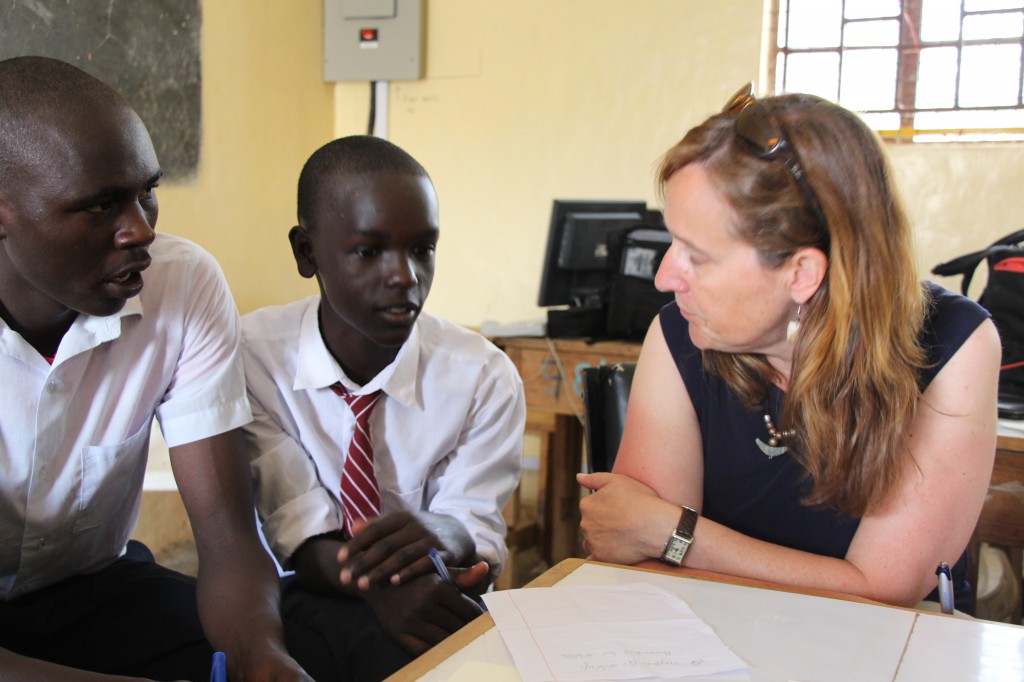
Knittel, an English teacher, and Stuart, a science teacher, wanted PA-MOJA’s cultural exchange program to move beyond pen pals and generate a forum whereby students could learn and share information about their intellectual passions using an inquiry based model. English teacher, Penny Carnrite, joined the project in the summer of 2014.
The site was inspired by Simon Fraser University professor, Dr. Cheryl Amundsen, who taught an Instructional Design Masters class taken by Knittel and Stuart.
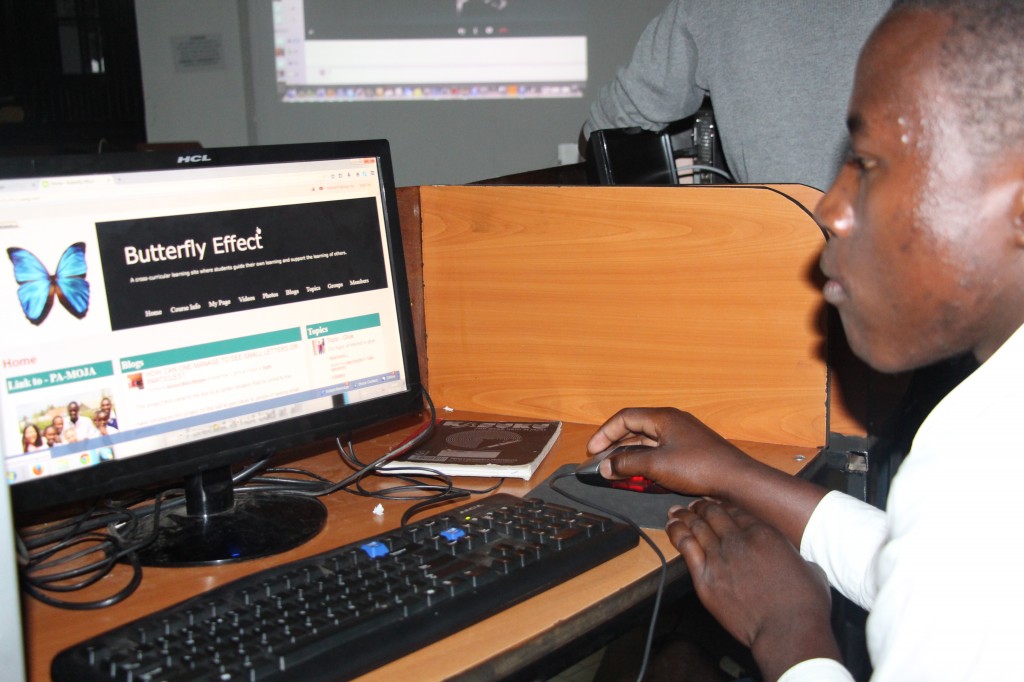
Knittel and Stuart felt it was important that students interested in specific disciplines such as science, languages, history, business, and the arts interact with students interested in other subject areas in other countries to encourage broader thinking and break down stereotypes. “Many people think that creativity belongs to the arts,” says Knittel. “We want our arts and humanities students to know that scientists have to be extremely creative thinkers. And we hope that our science oriented students will understand the complexity of thinking and planning that goes into producing a work of art or a philosophical essay. Interacting with students in another country just adds another layer of richness to their thinking.”
The website was named ‘Butterfly Effect’ because it describes the potential for small changes in one place to have large effects elsewhere, which is one of the aims of the website. “By collaborating online,” says Stuart, “students have the opportunity to make small but significant changes in each other’s research or way of thinking.”
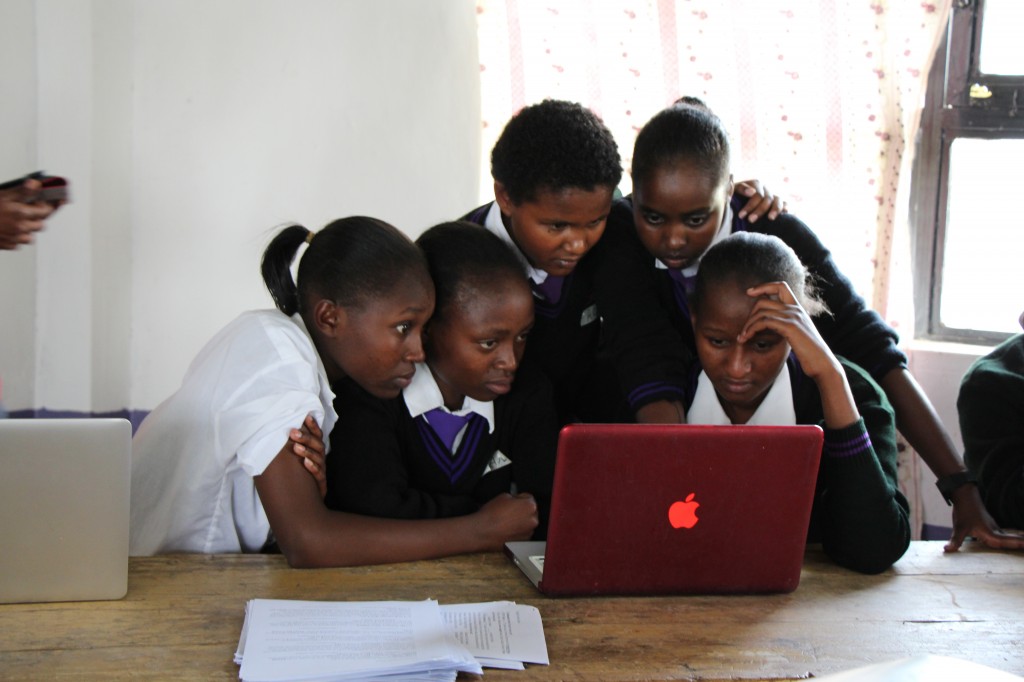
In the summer of 2013, Knittel and Stuart worked with Kenyan teacher, Daniel Mburu, and his science students from Tigithi Secondary to become the first members of the site. The students spent a day at the Ol Pejeta Conservancy getting their first email addresses and learning to navigate the internet, most for the first time in their lives. By the fall, they were connecting with another small group of students at Heritage Woods Secondary School in Canada. In spite of a few technical problems, the project kicked off successfully and the students were soon designing projects and actively collaborating.
In July, 2014 the project was expanded to include Loise Girls school in Kenya, Langley Fine Arts School in Canada and Madison East Secondary School in the United States. PA-MOJA supplied both Kenyan schools with an iPad to help facilitate the documentation of student projects. Before handing over the devices, PA-MOJA director, Moses Muthoki, led a team of PA-MOJA volunteers who trained the Kenyan students to use the iPads; the students were successfully able to practice skills such as video recording, editing and uploading. This now allows Kenyan students to share their projects on the Butterfly Effect website in the same way their North American peers do.

The feedback from students and teachers involved in the project has been positive. “Something magical happens when students from different countries are able to communicate with each other; it gives them the opportunity to explore their common interests and a way to act upon them,” says Langley Fine Arts School teacher, Penny Carnrite, who team teaches Butterfly Effect with Silvia Knittel and Alison Stuart.
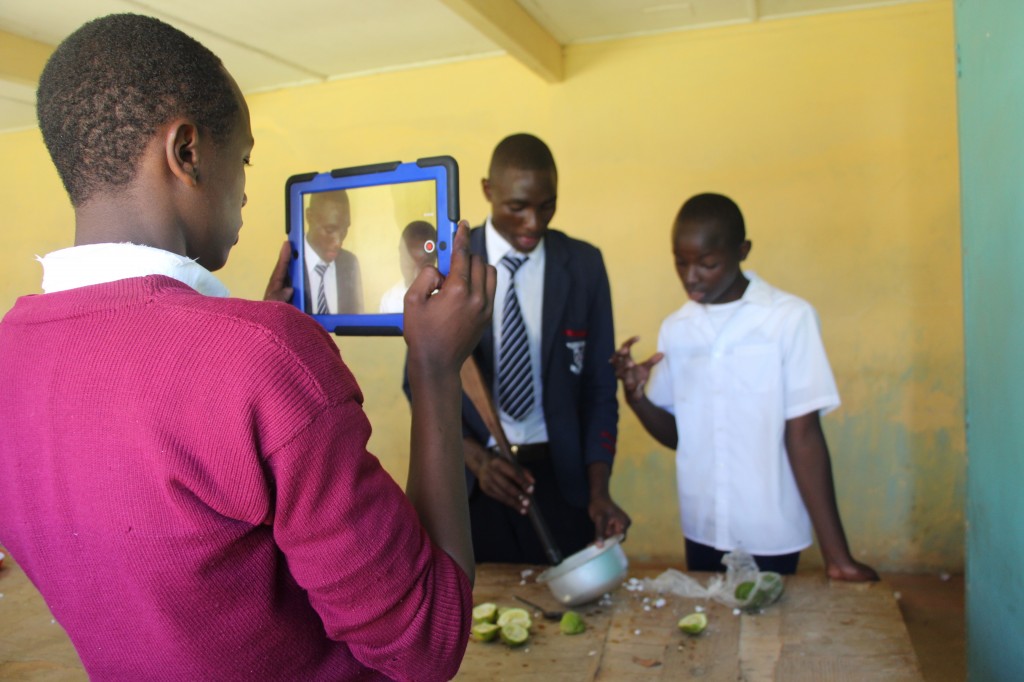
Tigithi student, Victor Mageto, says that Butterfly Effect has helped him academically and has given him his first opportunity to learn with technology. Evan Robson, from Heritage Woods in Canada, says that he has learned a lot about Kenyan life: “I found it interesting that Canadian students often focus their inquiries on issues of general interest, whereas Kenyan students focus on inquires that involve practical problems that need to be solved, such as how to build a fire extinguisher for dorms. It made me realize how different our lives are.”
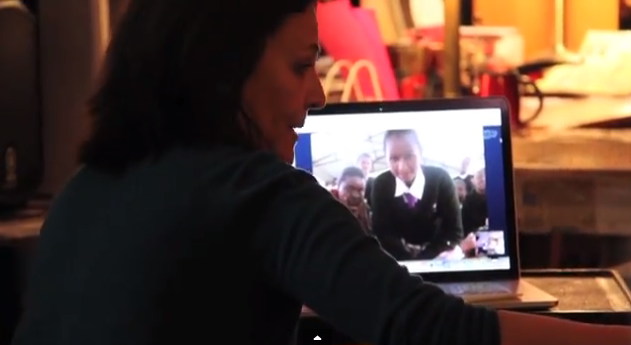
The students especially enjoy the skype calls which begin with intense conversations about their projects and sometimes end with song and dance exchanges and a lot of laughter.
To support the students’ inquiry projects, professional mentors have been enlisted to work with the students one on one. Engineers, doctors, business leaders, environmentalists, scientists, writers, etc. support the students by guiding them through their projects.
Kenyan students see huge benefits. They use the Butterfly website to exchange information that is not always readily accessible because of slow internet speed and a lack of access to computers.
Canadian students also benefit from the mentor relationships. Kenyan wildlife biologist, Samuel Njuki, is using his experience working at the William Holden Wildlife Foundation, to help Langley student, Tayler Testini. Tayler is building a website to educate people about elephant poaching. Tayler is traveling to Kenya in July, 2015 where she will meet her mentor and finalize her project.
Butterfly Effect also allows former grads to stay connected to the project. SFU students, and recent LFAS graduates, Andhra Azevedo, Kathleen Ennis, and Deven Azevedo are linked to three Kenyan students who share similar inquiry passions.
Please visit the Butterfly Effect website to see the incredible collaboration and work being done by students engaged in this project.

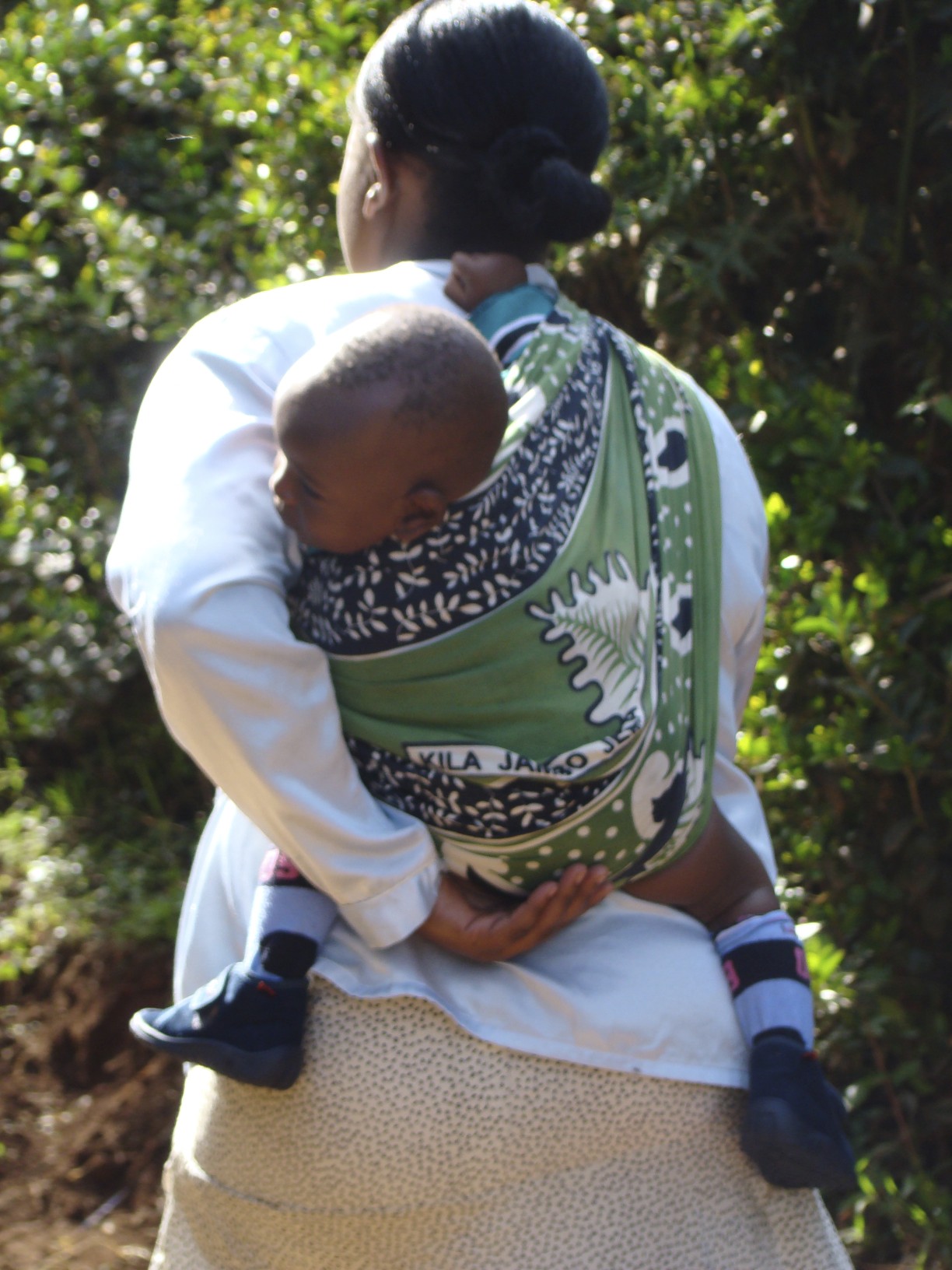
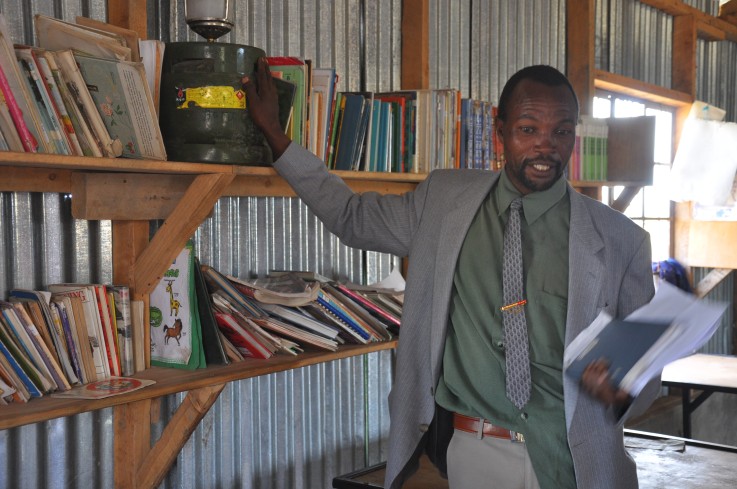

We have much to learn from each other. Well done to the teachers and students who participate in this program. It is only the beginning.
Congratulations to all involved.
What a fabulous project! Well done. Hoping to see some Acadia students involved in this project.
Great! Congratulations? I would welcome the opportunity to assist as a subject matter expert, Language Arts, media.
BTW I may be going to Rwanda with a side trip to Kenya in March at the invite of Chris Mburu who is of A Small Act Documentary (see Youtube). I met Chris here in Montreal last week. As a young boy he was sponsored by Hilda Back, a Jewish woman who escaped the Nazi; she’s now 93. Chris is now a lawyer with the UN and currently teaching judges in Rwanda.
As I am going with Chris to Kenya I am not as yet sure of the exact location though hope to say hello to the Ol Pejeta team and if possible would like to visit Tharua Secondary, with your permission of course. When I have more info where exactly in Kenya I’ll let you know. If you would like me to do something specific let me know.